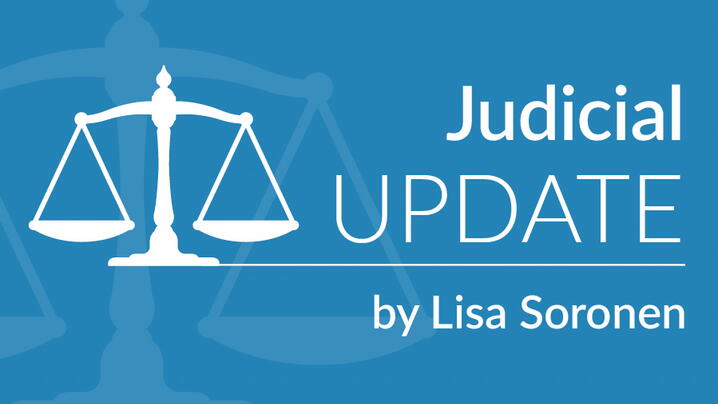
by Lisa Soronen, executive director, State and Local Legal Center
In Husted v. A. Philip Randolph Institute, the Supreme Court held that Ohio’s process of removing people from the voter rolls does not violate federal law. If a person doesn’t vote for two years, Ohio sends them a confirmation notice. If they don’t respond to the notice and don’t vote in the next four years, Ohio removes them from the voter rolls.
The State and Local Legal Center (SLLC) filed an amicus brief in this case supporting Ohio. Twelve other states maintain their voter rolls using a similar process.
The National Voter Registration Act (NVRA) allows states to remove voters if they don’t respond to a confirmation notice and don’t vote in the next two federal election cycles. The "failure-to-vote" clause, however, says a state program “shall not result in the removal of the name of any person . . . by reason of the person’s failure to vote.”
Two advocacy groups and an Ohio resident claim Ohio’s process violates NVRA’s failure-to-vote clause because “the failure to vote plays a prominent part in the Ohio removal scheme.” They argue failure to vote is used as a trigger for sending the confirmation notice and as a requirement for removal.
In a 5-to-4 opinion written by Justice Alito, the Supreme Court concluded the Ohio process doesn’t violate NVRA. First, it is undisputed that the Ohio process follows NVRA “to the letter.” Second, Justice Alito pointed to other language in NVRA stating that registrants may not be removed “solely by reason of a failure to vote.” According to the court, NVRA “simply forbids the use of nonvoting as the sole criterion for removing a registrant, and Ohio does not use it that way. Instead, as permitted by [NVRA], Ohio removes registrants only if they have failed to vote and have failed to respond to a notice.”
The challengers also argued that because so many people discard the confirmation notice, the failure to send it back is “worthless” as evidence someone has moved and is ineligible to vote. The Supreme Court rejected the notion it should second-guess the Ohio legislature’s “considered judgment” regarding the “probative value” of a registrant’s failure to respond to the confirmation notice.
The court again relied on respecting the judgment of the Ohio legislature in rejecting the challengers’ argument that the “Ohio’s procedure is illegal because the state sends out notices without having any ‘reliable indicator’ that the addressee has moved.” According to the court, “the Ohio legislature apparently thought that nonvoting for two years was sufficiently correlated with a change of residence to justify sending a [confirmation notice].”
The SLLC amicus brief points out that hundreds, if not thousands, of local and state governments are tasked with registering voters and maintaining voter rolls. Processes vary based on factors, including state law and resources, so governments need clear direction and flexibility regarding what process they can use to maintain voter rolls. The brief notes that while in this case Ohio is being sued for the process it uses to take people off the rolls, local and state governments have been sued for keeping ineligible voters on the rolls.
Joshua Davis, Reed Smith, wrote the SLLC brief, which the following organizations joined: National Conference of State Legislatures, Council of State Governments, National Association of Counties, National League of Cities, United States Conference of Mayors, International City/County Management Association, and International Municipal Lawyers Association.
Related Content
Leadership and Innovation: Encouraging Residents to Vote for a Tax Increase. This 2018 blog post looks at how several city managers and their local governments worked to convince voters to pass much needed tax increases.
Local Governments Support Early Voting and Election Day Access. This 2016 blog post looks at trends in early voting and election day access.
Creating Efficiencies in Voting. This document from 2012 looks at how one county in New Mexico analyzed data to make sure it was putting its polling places in the most efficient locations.
New, Reduced Membership Dues
A new, reduced dues rate is available for CAOs/ACAOs, along with additional discounts for those in smaller communities, has been implemented. Learn more and be sure to join or renew today!
